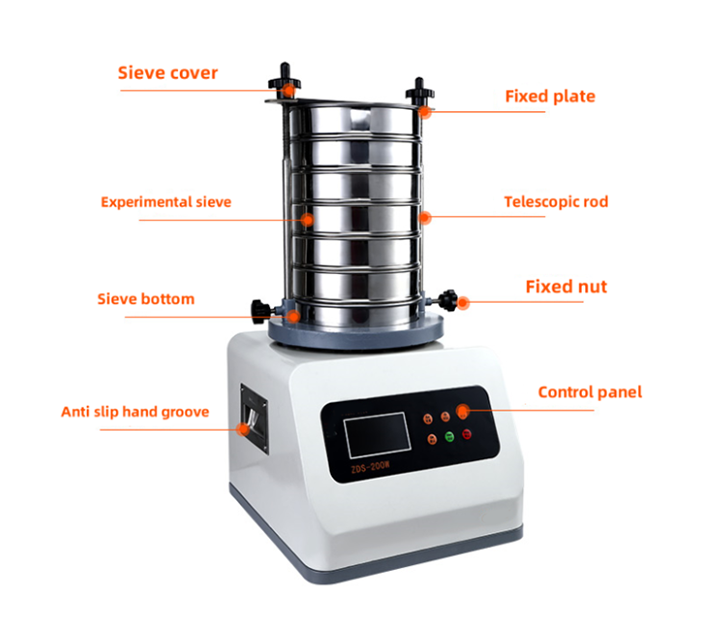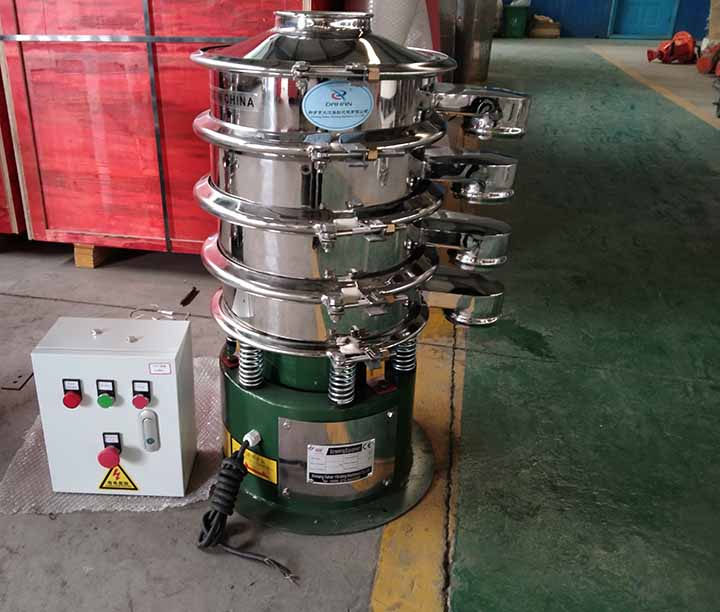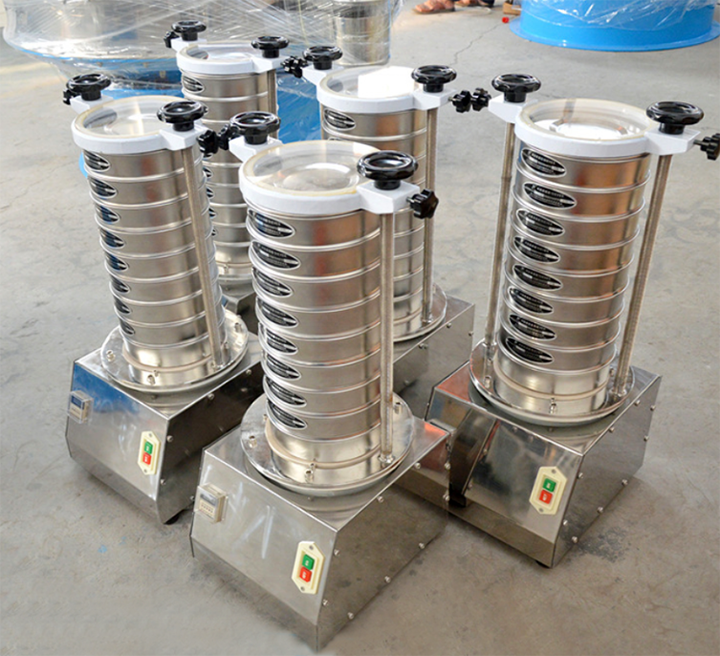Thursday November-20 2025 14:37:29
vibration sieve for material testing determine particle size distribution to assess material homogeneity and quality stability. These devices typically feature multiple vibration modes, including vertical, horizontal, and combined vibrations, with frequencies ranging from 10–60 Hz, adjustable amplitudes from 0.1–5 mm, settable timing from 0–99 min, and a maximum load of approximately 5–10 kg. They are compatible with sieves ranging from 75–300 mm in diameter. Common sieve layers are 5–8 layers for graded sieving. Common equipment used in material sieving analysis includes vibrating sieves, standard test sieves, electronic balances, drying ovens, and particle size analysis software.

The vibration sieve for material testing consists of a vibrating motor, sieve body, sieve frame, sieve mesh, base, and vibration damping devices. The sieve body is typically made of carbon steel or stainless steel to ensure strength and corrosion resistance. The sieve mesh is mostly made of stainless steel or special wire mesh. If the sieve mesh becomes clogged, it can be gently brushed from the bottom with a nylon brush. The sieve frame is made of aluminum alloy or stainless steel. Vibration motors are commonly vertical, horizontal, or excitation-type, and different frequencies and excitation forces can be selected according to the material characteristics. The total power of the machine is generally between 0.2 and 2.2 kW, depending on the diameter and number of layers.

Vibration sieve for material testing are categorized by size into benchtop and industrial types. Benchtop sieves include electromagnetic vibrating sieves, while industrial types include rotary vibrating sieves. Benchtop sieves prioritize precision and analysis of materials, while industrial sieves emphasize efficiency and throughput.
Electromagnetic vibrating sieves typically have sieve disc diameters of 200mm or 300mm, vibration frequencies up to 3000 times/minute, adjustable amplitude, and settable timing ranges. Noise levels are typically <65 dB. These sieves offer high sieving accuracy, good reproducibility, and low noise, making them ideal for laboratory analysis. They are suitable for materials such as soil, grains, chemical powders, and pharmaceutical raw materials. Both dry and wet sieving are supported; wet sieving can be achieved by replacing standard test sieves and equipping them with a spray system. They can be integrated with equipment such as drying ovens and analytical balances.

Rotary vibrating sieves have sieve diameters ranging from 400mm to over 2000mm. Vibration motor power typically ranges from 0.25kW to 5.5kW, and processing capacities range from 50 kg to 10 tons per hour. This vibration sieve can perform 1-5 layer screening, suitable for various ores, chemical raw materials, plastic granules, food, feed, etc. It supports both dry and wet screening, and its fully enclosed structure is particularly suitable for slurry materials, preventing liquid leakage. It can be integrated with crushers, mixers, packaging machines, etc., to form an automated production line.

The vibration sieve for material testing uses a stainless steel body, which is corrosion-resistant and has a smooth finish, effectively preventing test samples from being contaminated or undergoing chemical reactions, ensuring the accuracy of material composition analysis. Its core vibration motor and elastic damping system can generate high-intensity, low-amplitude vertical vibration and multi-dimensional oscillation, achieving rapid separation and smooth discharge of particulate materials of different densities, adhesion, and shapes, effectively solving the problems of material blockage and low screening efficiency. It is suitable for fine powders or new materials with slight viscosity. The robust sieve frame and standardized sieve clamps ensure that the sieve surface remains taut and flat under long-term high-frequency vibration, resulting in stable and reliable screening results.

A vibration sieve for material testing is a precision screening device used for preparing samples of solid bulk materials. Its working principle involves controlled vibration to continuously and uniformly agitate the material on the sieve surface, thereby achieving automatic particle separation and particle size distribution determination. The vibrating sieve can classify granular materials according to different particle sizes, ensuring a fast, stable, and highly repeatable screening process. In the pharmaceutical, food, and chemical industries, it is commonly used for quality control, process validation, and material analysis, providing a reliable data foundation for laboratories and production sites.
vibration sieve for material testing
Vibration sieve for material testing is used for sample preparation of solid or bulk materials, enabling automatic mixing, separation, and particle size analysis of materials throug...
Laboratory woven wire mesh sieves
Laboratory woven wire mesh sievesuse the physical barrier effect of their mesh openings to separate mixed materials according to...
Mechanical Sieve Shaker for Particle Analysis
Mechanical Sieve Shaker for Particle Analysis plays a central role in this process...
Wet sieving concrete is a test method that involves grading freshly mixed concrete or concrete samples through a sieve in water...
lab test sieve with material is used for sieving powders with uniform particle size and relatively regular shape...
Nov 20, 2025
vibration sieve for material testing
Vibration sieve for material testing is used for sample preparation of solid or bulk materials, enabl...
Nov 20, 2025
vibration sieve for material testing
Vibration sieve for material testing is used for sample preparation of solid or bulk materials, enabl...
Nov 19, 2025
Lab test sieves with materials include brass, stainless steel, or brass frames with stainless steel m...
Nov 18, 2025
Wet sieving concrete is a sample pretreatment procedure that removes coarse aggregate from fresh conc...
![]()
Then we look forward to hearing from you
Contact Us
Industrials
Yanjin county forest park gate to the west 1000 meters north road sitemap
